Crawford Francis Marion
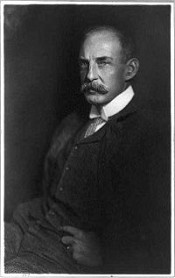
Francis Marion Crawford (August 2, 1854 – April 9, 1909) was an American writer noted for his many novels, especially those set in Italy, and for his classic weird and fantastic stories. He was born at Bagni di Lucca, Italy, the only son of the American sculptor Thomas Crawford and Louisa Cutler Ward, the brother of writer Mary Crawford Fraser (aka Mrs. Hugh Fraser), and the nephew of Julia Ward Howe, the American poet. He studied successively at St Paul's School, Concord, New Hampshire; Cambridge University; University of Heidelberg; and the University of Rome. In 1879 he went to India, where he studied Sanskrit and edited in Allahabad The Indian Herald. Returning to America in February of 1881, he continued to study Sanskrit at Harvard University for a year and for two years contributed to various periodicals, mainly The Critic. During this period he lived most of the time in Boston at his Aunt Julia Ward Howe's house and in the company of his Uncle, Sam Ward, who was helpful in setting Crawford on a literary path. Early in 1882 he established his life-long close friendship with Isabella Stewart Gardner. In December of 1882 he produced his first novel, Mr Isaacs, a brilliant sketch of modern Anglo-Indian life mingled with a touch of Oriental mystery. This book had an immediate success, and its author's promise was confirmed by the publication of Dr Claudius (1883). In May of 1883 he returned to Italy, where he made his permanent home. His residence at the historic Hotel Cocumella in Sorrento during 1885 moved him to settle permanently in Sant' Agnello, where in the Fall he bought the Villa Renzi that became Villa Crawford. Over one half of his novels are set in Italy. He wrote three long historical studies of Italy and was well advanced with a history of Rome in the Middle Ages when he died. This accounts perhaps for the fact that, in spite of his nationality, Marion Crawford's books stand apart from any distinctively American current in literature. In October of 1884 he married Elizabeth Berdan, the daughter of the American Civil War Union Gen. Hiram Berdan. They had two sons and two daughters. Year by year Crawford published a number of successful novels. Late in the 1890's he began to write the historical works. These are: Ave Roma Immortalis (1898), Rulers of the South (1900) renamed Southern Italy and Sicily and The Rulers of the South in 1905 for the American market, and Gleanings from Venetian History (1905) with the American title Salvae Venetia, itself reissued in 1909 as Venice; the Place and the People. In these his intimate knowledge of local Italian history combines with the romanticist's imaginative faculty to excellent effect. His shorter book Constantinople (1895) belongs to this category. After most of his fictional works had been published, most came to think he was a gifted narrator; and his books of fiction, full of historic vitality and dramatic characterization, became widely popular among readers to whom the realism of problems or the eccentricities of subjective analysis were repellent. In The Novel: What It Is (1893), he defended his literary approach, self-conceived as a combination of romanticism and realism, defining the art form in terms of its marketplace and audience. The novel, he wrote, is "a marketable commodity" and "intellectual artistic luxury" (8, 9) that "must amuse, indeed, but should amuse reasonably, from an intellectual point of view. . . . Its intention is to amuse and please, and certainly not to teach and preach; but in order to amuse well it must be a finely-balanced creation. . . ." (82). The Saracinesca series is perhaps known to be his best work, with the third in the series, Don Orsino (1892) set against the background of a real estate bubble, told with effective concision. The second volume is Sant' Ilario [Hilary] (1889). A fourth book in the series, Corleone (1897), was the first major treatment of the Mafia in literature, and used the now-familiar but then-original device of a priest unable to testify to a crime because of the Seal of the Confessional; the novel is not one of his major works, having failed to live up to the standard set by the books earlier in the series. Crawford ended Rulers of the South (1900) with a chapter about the Sicilian Mafia. Crawford himself was fondest of Khaled: A Tale of Arabia (1891), a story of a genie (genius is Crawford's word) who becomes human, which was reprinted (1971) in the Ballantine Adult Fantasy series of the early 1970s. A Cigarette-Maker's Romance (1890) was dramatized, and had considerable popularity on the stage as well as in its novel form; and in 1902 an original play from his pen, Francesca da Rimini, was produced in Paris by his friend Sarah Bernhardt. Crawford's best known dramatization was that of The White Sister (1909). Its main actress was Viola Allen, whose first film was the 1915 film of this novel; it was filmed again in 1923 and 1933. In the Palace of the King (1900) was filmed in 1915 and 1923; Mr. Isaacs (1882) was filmed in 1931 as Son of India. Several of his short stories, such as "The Upper Berth" (1886; written in 1885), "For the Blood Is the Life" (1905, a vampiress tale), "The Dead Smile" (1899), and "The Screaming Skull" (1908), are often-anthologized classics of the horror genre. An essay on Crawford's weird tales can be found in S. T. Joshi's The Evolution of the Weird Tale (2004); there are many other essays and introductions. The collected weird stories were posthumously published in 1911 as Wandering Ghosts in the U. S. and as Uncanny Tales in Gt. Britain, both without the long-forgotten "The King's Messenger" (1907). The present definitive edition is that edited by Richard Dalby as Uncanny Tales and published by the Tartarus Press (1997; 2008). Crawford's novella Man Overboard! (1903) is often overlooked, but belongs with his supernatural works. In 1901 the American Macmillan firm began a deluxe uniform "edition" of his novels, as reprintings required. In 1904 the P. F. Collier Co. (N. Y.) was authorized to publish a 25-volume "edition", later increased to 32 volumes. Around 1914 the subscription firm McKinlay, Stone, Mackenzie was authorized to publish an "edition" using the Macmillan binding decorations. In 1919 the American Macmillan firm published the "Sorrento Edition". They also had issued some first American editions and reprints in a uniform binding from 1891 through 1899. The British Macmillan firm used two separate uniform bindings from 1889 until after 1910. Crawford wrote numerous articles for major periodicals and a few contributions to books. See the section "Bibliographical History" in An F. Marion Crawford Companion (1981) by John C. Moran. Crawford died at Sorrento on Good Friday of 1909 at Villa Crawford of a heart attack. It was the ten-year result of a severe lung injury that happened (inhalation of toxic gases at a glass-smelting works in Colorado) on his American lecture-tour during the winter of 1897-1898. He was gathering technical information for his historical novel Marietta (1901), that describes glass-making in late medieval Venice. The F. Marion Crawford Memorial Society was founded in 1975 and published the literary review The Romantist from 1977 until 1997. In 1997 the Centro Studi e Ricerche Francis Marion Crawford was founded at Sant' Agnello di Sorrento. It is formally associated with the FMC Memorial Society and continues The Romantist in its annual review Genius Loci (1997-). In 1988 at Sant' Agnello a Conference was held to commemorate Crawford. Its "Acta" were published as Il Magnifico Crawford (1990). In mid-May of 2009 the Centro Studi e Ricerche FMC, the Istituto Universitario Orientale (Naples), the FMC Memorial Society, and the township of Sant' Agnello organized another Conference -- Francis Marion Crawford; 100 Anni Dopo -- to remember him on the centenary of his death. Its "Acta" are forthcoming. Crawford and his works live on. This article incorporates text from the Encyclopædia Britannica, Eleventh Edition, a publication now in the public domain. The Complete Wandering Ghosts http://www.leeweinstein.net under other works
do you like this author?
What readers are saying
What do you think? Write your own comment on this book!
write a commentWhat readers are saying
What do you think? Write your own comment on this author!
write a commentBook list

Whosoever Shall Offend
Series:
Unknown
Year:
Unknown
Raiting:
2/5
A few philosophers who said that if the widow was satisfied the matter was nobody's business were treated with the contempt they deserved. Those who, on the contrary, observed that young Corbario had married for money and nothing else were heard with favour, until the man who knew everything pointed out that as the greater part of the fortune would be handed over to Marcello when he came of age, six years hence, Corbario had not made a good bargain and might have done better.
A 1904 novel by an American writer of the nineteenth and early twentieth century Francis Marion Crawford. He was the author of over forty novels, most of which were in the style of disposable romances popular at the time; stories of the horror and occult, for which the author is best is remembered today.
Show more
add to favoritesadd In favorites
A 1904 novel by an American writer of the nineteenth and early twentieth century Francis Marion Crawford. He was the author of over forty novels, most of which were in the style of disposable romances popular at the time; stories of the horror and occult, for which the author is best is remembered today.
Show more
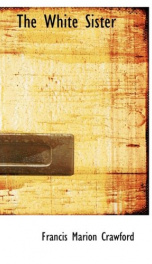
The White Sister
Series:
Unknown
Year:
Unknown
Raiting:
2/5
A 1909 novel by an American writer of the nineteenth and early twentieth century Francis Marion Crawford. He was the author of over forty novels, most of which were in the style of disposable romances popular at the time; stories of the horror and occult, for which the author is best is remembered today.
Show more
add to favoritesadd In favorites
Book list

Whosoever Shall Offend
Series:
Unknown
Year:
Unknown
Raiting:
2/5
A few philosophers who said that if the widow was satisfied the matter was nobody's business were treated with the contempt they deserved. Those who, on the contrary, observed that young Corbario had married for money and nothing else were heard with favour, until the man who knew everything pointed out that as the greater part of the fortune would be handed over to Marcello when he came of age, six years hence, Corbario had not made a good bargain and might have done better.
A 1904 novel by an American writer of the nineteenth and early twentieth century Francis Marion Crawford. He was the author of over forty novels, most of which were in the style of disposable romances popular at the time; stories of the horror and occult, for which the author is best is remembered today.
Show more
add to favoritesadd In favorites
A 1904 novel by an American writer of the nineteenth and early twentieth century Francis Marion Crawford. He was the author of over forty novels, most of which were in the style of disposable romances popular at the time; stories of the horror and occult, for which the author is best is remembered today.
Show more

The White Sister
Series:
Unknown
Year:
Unknown
Raiting:
2/5
A 1909 novel by an American writer of the nineteenth and early twentieth century Francis Marion Crawford. He was the author of over forty novels, most of which were in the style of disposable romances popular at the time; stories of the horror and occult, for which the author is best is remembered today.
Show more
add to favoritesadd In favorites

Via Crucis
Series:
Unknown
Year:
Unknown
Raiting:
2.5/5
A story of the time of the second crusade, when crusaders were trying to get back the lost County_of_Edessa. A young knight, Gilbert, took part in this campaign among French, German and Sicilian men, the majority of which were striving after glory, riches and land. Gilbert, however, was guided a completely different motive – a wish to take revenge for his father’s death.
Historical novel by Francis Marion Crawford, an American writer noted for his novels set in Italy, and for his weird and fantastic classic stories.
Show more
add to favoritesadd In favorites
Historical novel by Francis Marion Crawford, an American writer noted for his novels set in Italy, and for his weird and fantastic classic stories.
Show more

The Upper Berth
Series:
Unknown
Year:
Unknown
Raiting:
4.5/5
Francis Marion Crawford (1854-1909) was an American writer noted for his many novels. He was born at Bagni di Lucca, Italy. In 1879 he went to India, where he studied Sanskrit and edited the Allahabad Indian Herald. Returning to America he continued to study Sanskrit at Harvard University for a year, contributed to various periodicals, and in 1882 produced his first novel, Mr Isaacs. This book had an immediate success, and its author's promise was confirmed by the publication of Doctor Claudius: A True Story (1883). After a brief residence in New York and Boston, in 1883 he returned to Italy, where he made his permanent home. He also published the historical works, Ave Roma Immortalis (1898), Rulers of the South (1900) renamed Sicily, Calabria and Malta in 1904, and Gleanings from Venetian History (1905). The Saracinesca series is perhaps known to be his best work, with the third in the series, Don Orsino, set against the background of a real estate bubble, told with effective concision. A fourth book in the series, Corleone, was the first major treatment of the Mafia in literature. --This text refers to an alternate Paperback edition.
Show more
add to favoritesadd In favorites
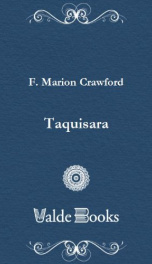
Taquisara
Series:
Unknown
Year:
Unknown
Raiting:
4.5/5
Taquisara. please visit www.valdebooks.com for a full list of titles
Show more
add to favoritesadd In favorites

Stradella
Series:
Unknown
Year:
Unknown
Raiting:
4.5/5
Francis Marion Crawford (1854-1909) was an American writer noted for his many novels. He was born at Bagni di Lucca, Italy. In 1879 he went to India, where he studied Sanskrit and edited the Allahabad Indian Herald. Returning to America he continued to study Sanskrit at Harvard University for a year, contributed to various periodicals, and in 1882 produced his first novel, Mr Isaacs. This book had an immediate success, and its authorâs promise was confirmed by the publication of Dr Claudius (1883). After a brief residence in New York and Boston, in 1883 he returned to Italy, where he made his permanent home. He also published the historical works, Ave Roma Immortalis (1898), Rulers of the South (1900) renamed Sicily, Calabria and Malta in 1904, and Gleanings from Venetian History (1905). The Saracinesca series is perhaps known to be his best work, with the third in the series, Don Orsino, set against the background of a real estate bubble, told with effective concision. A fourth book in the series, Corleone, was the first major treatment of the Mafia in literature. --This text refers to an alternate Paperback edition.
Show more
add to favoritesadd In favorites

Sant' Ilario
Series:
Unknown
Year:
Unknown
Raiting:
3.5/5
The Saracinesca series is perhaps known to be the best of Crawford's works. Set chiefly in Rome twenty years earlier, Saracinesca (1887) paints a rich picture of the period and proved to be both an immediate hit and Crawford's greatest critical success. It was also a commercial triumph. He followed it with two brilliant sequels, Sant' Ilario (1889) and Don Orsino (1892). --This text refers to an alternate Paperback edition.
Show more
add to favoritesadd In favorites

A Roman Singer
Series:
Unknown
Year:
Unknown
Raiting:
4.5/5
This book was converted from its physical edition to the digital format by a community of volunteers. You may find it for free on the web. Purchase of the Kindle edition includes wireless delivery.
Show more
add to favoritesadd In favorites

The Primadonna
Series:
Unknown
Year:
Unknown
Raiting:
2.5/5
Purchase of this book includes free trial access to www.million-books.com where you can read more than a million books for free. This is an OCR edition with typos. Excerpt from book: CHAPTER III The Leofric was three days out, and therefore halfway over the ocean, for she was a fast boat, but so far Griggs had not been called upon to hinder Mr. Van Torp from annoying Margaret. Mr. Van Torp had not been on deck; in fact, he had not been seen at all since he had disappeared into his cabin a quarter of an hour before the steamer had left the pier. There was a good deal of curiosity about him amongst the passengers, as there would have been about the famous Primadonna if she had not come punctually to every meal, and if she had not been equally regular in spending a certain number of hours on deck every day. At first every one was anxious to have what people call a 'good look' at her, because all the usual legends were already repeated about her wherever she went. It was said that she was really an ugly woman of thirty- five who had been married to a Spanish count of twice that age, and that he had died leaving her penniless, so that she had been obliged to support herself by singing. Others were equally sure that she was a beautiful escaped nun, who had been forced to take the veil in a convent in Seville by cruel parents, but who had succeeded in getting herself carried off by a Polish nobleman disguised as a priest. Every one rememberedthe marvellous voice that used to sing so high above all the other nuns, behind the lattice on Sunday afternoons at the church of the Dominican Convent. That had been the voice of Margarita da Cordova, and she could never go back to Spain, for if she did the Inquisition would seize upon her, and she would be tortured and probably burnt alive to encourage the other nuns. This was very romantic, but unfortunately there was a man who said he knew the plain truth about her, and that she was just a good-looking Irish girl who...
Show more
add to favoritesadd In favorites

Paul Patoff
Series:
Unknown
Year:
Unknown
Raiting:
3.5/5
Originally published in 1893. This volume from the Cornell University Library's print collections was scanned on an APT BookScan and converted to JPG 2000 format by Kirtas Technologies. All titles scanned cover to cover and pages may include marks notations and other marginalia present in the original volume. --This text refers to an alternate Paperback edition.
Show more
add to favoritesadd In favorites

Mr. Isaacs
Series:
Unknown
Year:
Unknown
Raiting:
1/5
This book was converted from its physical edition to the digital format by a community of volunteers. You may find it for free on the web. Purchase of the Kindle edition includes wireless delivery.
Show more
add to favoritesadd In favorites

Marzio's Crucifix and Zoroaster
Series:
Unknown
Year:
Unknown
Raiting:
4.5/5
Maestro Marzio Pandolfi was a skilled workman and an artist. He was one of the last of those workers in metals who once sent their masterpieces from Rome to the great cathedrals of the world¿' (Excerpt) --This text refers to an alternate Paperback edition.
Show more
add to favoritesadd In favorites
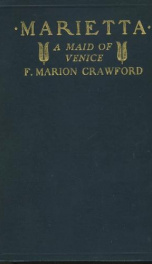
Marietta
Series:
Unknown
Year:
Unknown
Raiting:
2/5
By an American writer of the nineteenth and early twentieth century Francis Marion Crawford.
He was the author of over forty novels, most of which were in the style of disposable romances popular at the time; stories of the horror and occult, for which the author is best is remembered today.
Show more
add to favoritesadd In favorites
He was the author of over forty novels, most of which were in the style of disposable romances popular at the time; stories of the horror and occult, for which the author is best is remembered today.
Show more
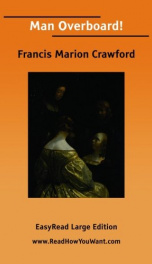
Man Overboard!
Series:
Unknown
Year:
Unknown
Raiting:
4.5/5
ReadHowYouWant publishes a wide variety of best selling books in Large and Super Large fonts in partnership with leading publishers. EasyRead books are available in 11pt and 13pt. type. EasyRead Large books are available in 16pt, 16pt Bold, and 18pt Bold type. EasyRead Super Large books are available in 20pt. Bold and 24pt. Bold Type. You choose the format that is right for you.Set in a nautical background, this work beautifully amalgamates romance and super-natural. This work is about identical twins who love the same woman. Life on sea is, however, full of many risks; those who are gone may come back to haunt and destroy lives. Spine-chilling!To find more titles in your format, Search in Books using EasyRead and the size of the font that makes reading easier and more enjoyable for you.
Show more
add to favoritesadd In favorites
What readers are saying
What do you think? Write your own comment on this author!
write a commentif you like Crawford Francis Marion try:
readers also enjoyed
What readers are saying
What do you think? Write your own comment on this author!
write a commentGenre
if you like Crawford Francis Marion try:
readers also enjoyed
Do you want to exchange books? It’s EASY!
Get registered and find other users who want to give their favourite books to good hands!

